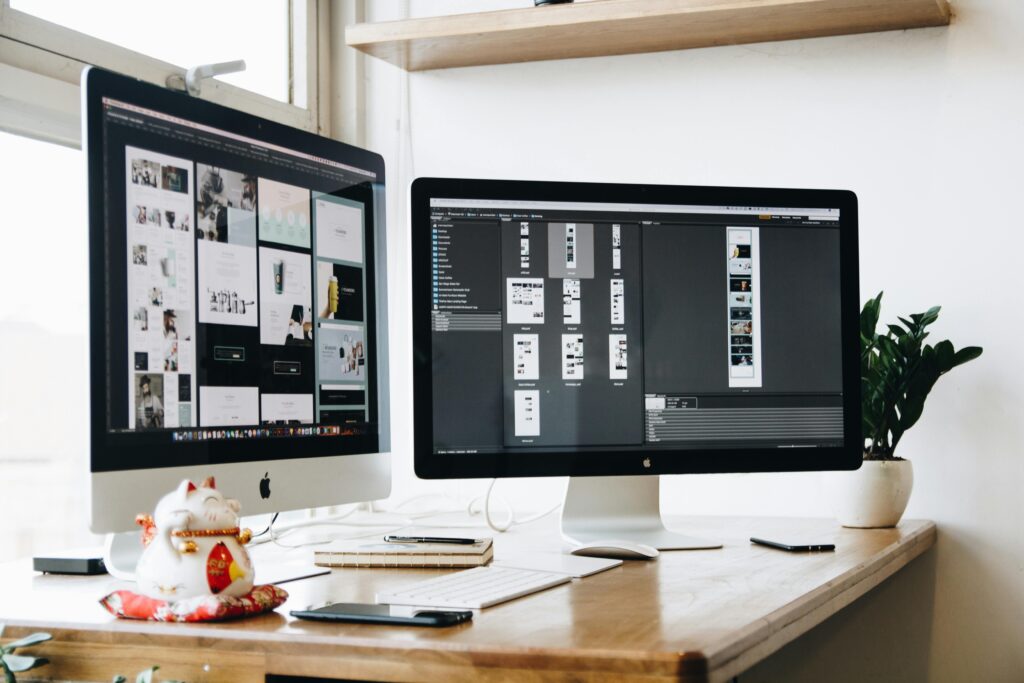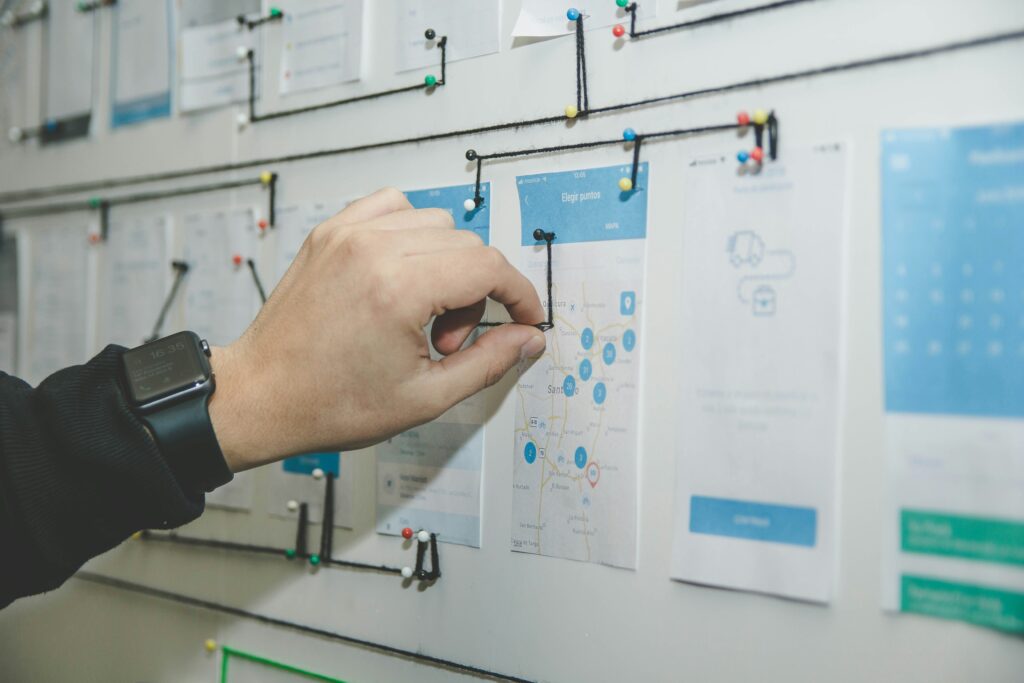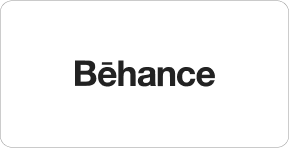Introduction
User-Centered Design (UCD) has emerged as a crucial principle in the realm of web development, emphasizing the need to prioritize the user’s experience throughout the design process. This approach not only enhances usability but also fosters a deeper emotional connection between users and digital products. In this article, we will explore the fundamental concepts of UCD, its significance in web development, key components involved, best practices for implementation, and the challenges faced in this ever-evolving field. By understanding and applying UCD principles, developers can create more intuitive, accessible, and engaging web experiences.
Understanding User-Centered Design
Definition of User-Centered Design
User-Centered Design is a design philosophy that places the user at the forefront of the design process. It involves understanding the needs, behaviors, and preferences of users and tailoring solutions to meet those requirements. UCD is characterized by iterative processes and continual feedback, ensuring that the final design aligns with user expectations and enhances overall satisfaction.
History and Evolution
The concept of User-Centered Design can be traced back to the mid-20th century, with roots in psychology and ergonomics. Pioneers like Donald Norman played a significant role in advocating for user-centered approaches in product design. Over the years, UCD has evolved alongside technology, adapting to shifts in user behavior and the proliferation of digital interfaces, thus becoming integral to modern web development.
Core Principles of User-Centered Design
UCD is grounded in several core principles, including:
- Focus on User Needs: Understanding users’ goals and challenges is paramount.
- Iterative Design: Continuous testing and refinement based on user feedback.
- Involvement of Users: Engaging users throughout the design process ensures relevance and usability.
- Accessibility: Designing for a diverse audience, including users with disabilities.
The Role of User-Centered Design in Web Development
Enhancing User Experience
User-Centered Design plays a pivotal role in enhancing user experience (UX). By focusing on the users’ perspectives, developers can create intuitive interfaces that facilitate seamless interactions. This leads to increased satisfaction and loyalty, as users are more likely to return to a website that meets their needs effectively.
Improving Accessibility
Another significant contribution of UCD is its emphasis on accessibility. Designing with all users in mind, including those with disabilities, ensures that web applications are usable by a broader audience. This not only fulfills legal obligations but also fosters inclusivity, allowing organizations to reach and engage a larger market share.
Boosting User Engagement
Websites utilizing UCD principles tend to achieve higher levels of user engagement. By providing relevant content, facilitating easy navigation, and reducing cognitive load, users are more likely to interact with the site’s features and ultimately achieve their goals. This engagement can lead to higher conversion rates, which is critical for businesses operating online.
Key Components of User-Centered Design
User Research and Analysis
Effective User-Centered Design begins with thorough user research and analysis. This phase involves gathering qualitative and quantitative data through surveys, interviews, and observation. Understanding user demographics, preferences, and pain points allows designers to create solutions tailored to real-world needs.
Personas and User Scenarios
Once user data is collected, creating personas and user scenarios becomes essential. Personas are fictional characters representing typical users, while user scenarios depict how these personas might interact with the website. This practice helps focus design efforts on specific user goals, ensuring that features and content resonate with the target audience.
Prototyping and Testing
Prototyping is a vital step in the UCD process. It allows designers to create early models of the interface for testing purposes. Usability testing with real users provides insights into how well the design meets user needs and where improvements are necessary. Iterating on feedback leads to a refined product that aligns closely with user expectations.
UI/UX Design and Its Relationship With User-Centered Design
Defining UI and UX
User Interface (UI) design and User Experience (UX) design are two complementary aspects of digital product development. UI focuses on the visual elements and interactive features of a website, while UX encompasses the overall experience users have while navigating the site. Both rely heavily on the principles of UCD to deliver effective solutions.
How User-Centered Design Influences UI/UX
User-Centered Design significantly influences UI and UX by prioritizing usability and accessibility. A UI that is visually appealing yet difficult to use will not succeed in creating a positive user experience. UCD ensures that every design choice, from color schemes to navigation structures, is made with the user’s best interests in mind.
Case Studies of Successful UI/UX Implementations
Numerous case studies illustrate the effectiveness of UCD in driving successful UI/UX implementations. For instance, companies like Airbnb and Dropbox have leveraged user research to create interfaces that prioritize user needs and preferences, resulting in higher engagement and satisfaction rates. These companies continuously iterate on their designs based on user feedback, showcasing the dynamic nature of UCD in practice.
Best Practices for Implementing User-Centered Design in Web Development
Incorporating User Feedback
Integrating user feedback into the design process is crucial for successful UCD implementation. Feedback mechanisms such as surveys, usability testing, and direct user input allow designers to identify areas of improvement and validate features. Regularly updating the design based on this feedback ensures that it remains relevant and effective.
Iterative Design Process
The iterative design process is a hallmark of UCD. By repeatedly testing and refining designs, developers can address user concerns and enhance usability. This cycle of prototyping, testing, and modifying promotes continuous improvement and ensures that the final product aligns closely with user expectations.
Collaborative Design Teams
Creating a collaborative environment among design teams fosters innovation and creativity. Involving cross-disciplinary teams, including designers, developers, and stakeholders, allows for diverse perspectives to shape the final product. This collaboration enhances problem-solving and ensures that all aspects of user experience are considered.
Challenges in User-Centered Design
Balancing Business Goals and User Needs
One of the most significant challenges in UCD is balancing business objectives with user needs. Organizations often prioritize revenue generation and market competitiveness, which can lead to decisions that compromise user experience. Striking a balance requires ongoing communication between stakeholders and a steadfast commitment to user-centric principles.
Resource Constraints
Resource constraints, including time and budget limitations, can impede the UCD process. Conducting thorough user research and iterative testing requires investment, which may not always be feasible. Organizations must recognize the long-term benefits of UCD and allocate resources accordingly to achieve superior design outcomes.
Keeping Up With Technological Changes
The rapid pace of technological advancements presents another challenge for UCD practitioners. New tools and platforms continuously reshape user behavior and expectations. Staying updated on industry trends and emerging technologies is essential for ensuring that designs remain relevant and effective in meeting user needs.
Conclusion
Recap of Key Points
User-Centered Design is an essential approach in modern web development that emphasizes understanding user needs and preferences. By prioritizing user experience, accessibility, and engagement, developers can create more effective and satisfying digital products. Key components such as user research, personas, prototyping, and iterative testing form the foundation of a successful UCD strategy.
The Future of User-Centered Design in Web Development
The future of User-Centered Design looks promising, with increasing recognition of its importance in delivering quality digital experiences. As technology continues to evolve, so will the practices and methodologies of UCD. By embracing these principles, developers will not only enhance their products but also contribute to a more inclusive and user-friendly digital landscape.
Learn about web development road map.
FAQs
1. What is the main goal of User-Centered Design?
The main goal of User-Centered Design is to create products that meet the actual needs and preferences of users, enhancing their overall experience and satisfaction.
2. How can User-Centered Design improve accessibility?
User-Centered Design improves accessibility by involving diverse user groups in the design process, ensuring that the final product can be used by individuals with various abilities and disabilities.
3. What techniques are used in user research?
Common techniques in user research include surveys, interviews, focus groups, usability testing, and observational studies to gather data about user preferences and behaviors.
4. Why is prototyping important in User-Centered Design?
Prototyping is essential because it allows designers to create tangible models of their ideas, facilitating user testing and feedback to refine the design before final implementation.
5. How does collaboration enhance User-Centered Design?
Collaboration enhances User-Centered Design by bringing together diverse perspectives and expertise, fostering innovative solutions that address user needs more effectively.







